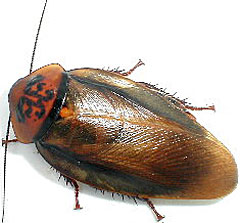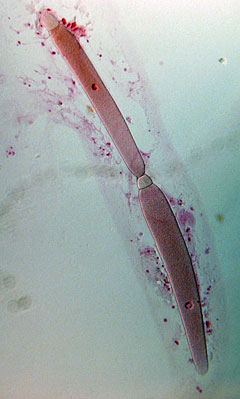Gregarines from orange headed cockroaches
The orange headed cockroach, Eublaberus posticus, is distributed through Central America and Northern South America (reported from Nicaragua, Costa Rica, Panama, Colombia, Trinidad and Tobago, Guyana, Suriname, French Guiana, Brazil, Peru, and Ecuador). Wild populations are cave dwelling by nature and are associated with accumulated bat guano in branching cave systems. These populations can be quite dense, ranging from 1,040-5,000 cockroaches per square meter of bat guano. Adults and older nymphs typically roost on the lower cave walls while younger nymphs are found in adjacent guano deposits. (see Darlington in Roth, 1968, Ann. Ent. Soc. Am. 61(3):571-579). Orange headed cockroaches are relatively easy to keep in culture, reproducing freely over a 2-3 year life span. They are common in the commercial pet trade as feeder insects for captive reptiles and as culture specimens among cockroach enthusiasts.
Colonies of Eublaberus posticus maintained in our laboratory are infected with a single gregarine species. These gregarines are a new species of Protomagalhaensia, a genus whose members are known only from tropical cockroaches. We are currently finishing the data collection for all life cycle stages of this gregarine prior to publishing a description of this new species.
Jon Kolman is the lead researcher on this project.


